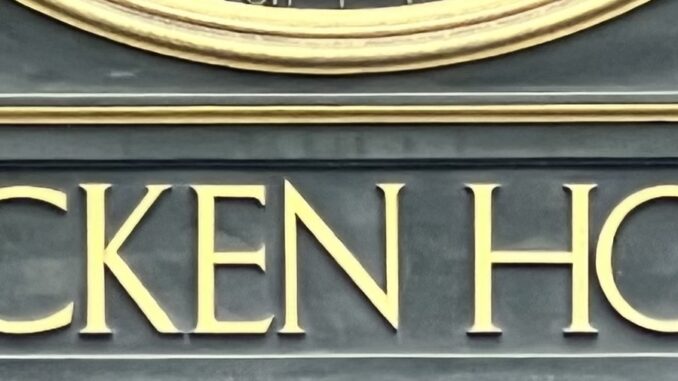
The home of the Financial Times newspaper on Cannon Street by St Paul’s Cathedral is called Bracken House, its red sandstone bricks an hommage to the pink pages of the publication.
This is named after Brendan Bracken, and Irish-born publisher and businessman (although he always repudiated his Irishness, claiming at various times to be Australian or English) who was Churchill’s Minister of Information from 1941-45. His room in the Churchill War Rooms is second only to Churchill’s in terms of size, giving some idea of his importance and his closeness to the PM.
The department he headed (based at Senate House in Bloomsbury) was responsible for publicity and propaganda, controlling news and information during the war. Bracken seems to have encouraged a ‘light touch’ when it came to censorship and information flow, which meant that the wartime British media were allowed considerable latitude in their reporting and criticism of the government.
(This probably gives the lie to the story that 1984’s ‘Big Brother’ was based on Bracken despite the same ‘BB’ initials. Orwell’s wife certainly worked in Senate House and his ‘Ministry of Truth’ is something of a satire on and a criticism of the Ministry of Information, but it’s a bit of a leap to go from that to Bracken being the centre of a totalitarian cult of personality.)
He is credited with reinventing the Financial Times (hence its offices bearing his name) and founded History Today magazine, which still survives.
Politically he was loyal to Churchill from the early 1920s (when Churchill was out of parliament and moving back to the Conservatives from the Liberal Party). He himself was elected to Parliament in 1929 and supported Churchill’s calls for rearmament during the 1930s. He became a Privy Councillor and Churchill’s Parliamentary Private Secretary in 1940.
The closeness of this relationship is presumably why the centre of the clock above the door of Bracken House is Churchill’s face.
And it’s a pretty strange clock in other ways too. It was a collaboration between the sculptors Frank Dobson and Philip Bentham (if you’ve walked along the South Bank you will almost certainly have passed Dobson’s ‘London Pride’) and made by the clockmakers Thwaites + Reed. Rather than having hands, the clock dials rotate, the time being seen at the top of the clock, as is the day, the month and the phase of the astrological year.
Bracken died in 1958, the year before the FT occupied its new building.


